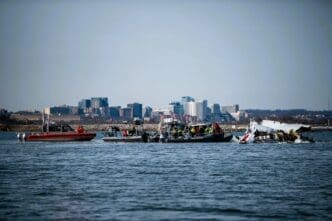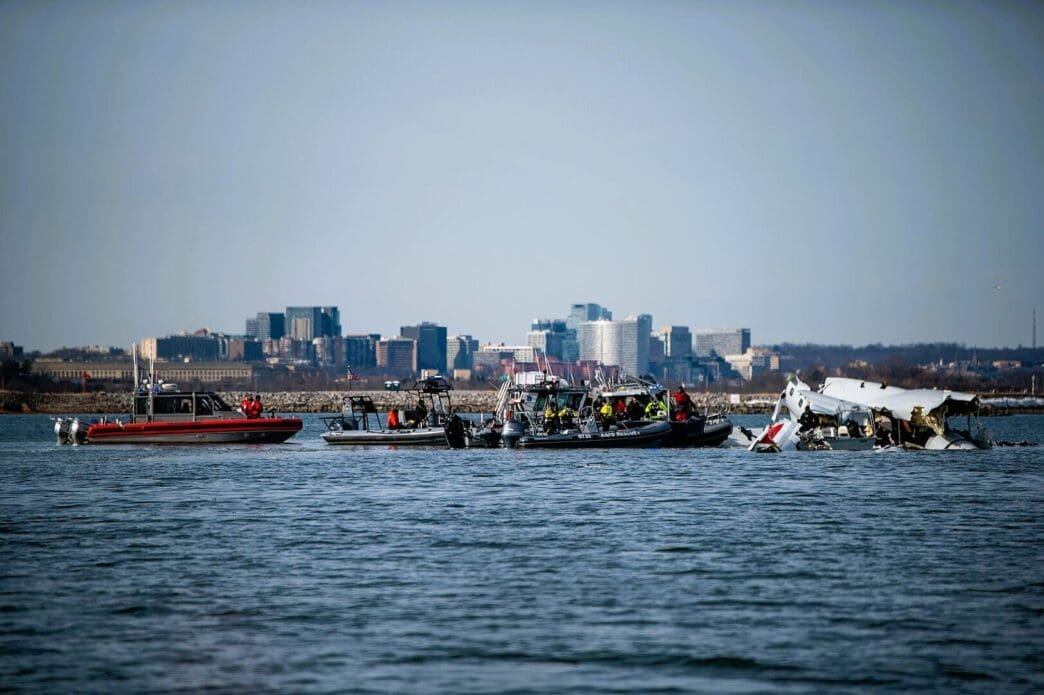Crews in Washington, DC are navigating the recovery of two aircraft that crashed into the Potomac River, marking a tragic aviation disaster in recent history. With 55 of the 67 victims identified, the dual mission stresses the retrieval of wreckage and remains, an effort made complex by the harsh weather conditions and the river’s icy depths.
A historic crane operation took place as teams extracted parts of the American Eagle flight 5342 and a Black Hawk helicopter from the river. The recovery, aiming for clarity on the incident, faces the challenge of wind and tides, potentially delaying the retrieval of the cockpit from the American Airlines plane.
Steven Wallace, former director of the FAA’s Accident Investigation Office, expressed confidence that the cause of the collision will become clear, citing comprehensive data from radar and eyewitness reports. However, impending snow and freezing rain forecasted for Wednesday are set to complicate recovery efforts further.
The recovery mission, which is extensive and includes multiple agencies like the US Coast Guard and FBI, has unveiled some wreck parts but remains a daunting task. Rescue teams have leveraged advanced hydraulic rescue tools to access submerged aircraft parts, essential for recovering victims’ bodies.
This operation also relies heavily on data from the aircraft’s flight recorders. Initial findings revealed that the American Airlines flight showed a pitch change before the crash, with the NTSB investigating whether the helicopter violated its altitude limit of 200 feet. The flight data showed the plane at 325 feet during impact while there was no record of the helicopter breaching its limit, according to air traffic control.
The NTSB continues to analyze data from the Black Hawk’s black box, essential for verifying flight paths and timelines, given the five-second update interval of DC tower radar. This analysis is critical as the NTSB strives to piece together the events that led to this catastrophic incident.
The investigation into the tragic collision over the Potomac River is ongoing, with recovery efforts continuing under challenging conditions. As teams work to retrieve more evidence and remains, they endeavor to bring clarity to the cause of this aviation disaster. The efforts of the recovery teams are a testament to their dedication and resolve in the face of adversity.








